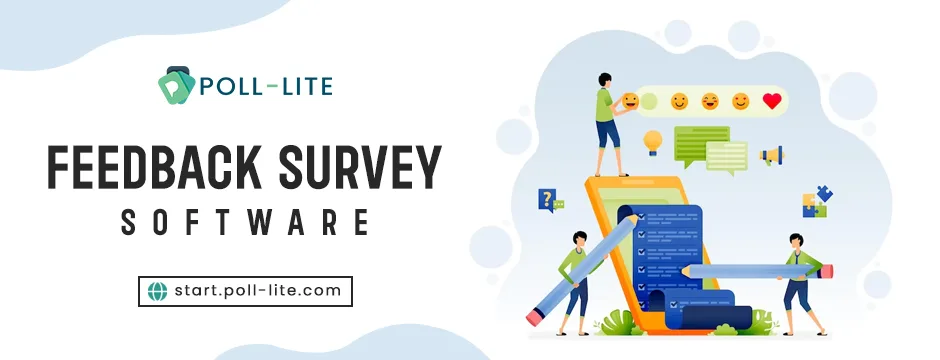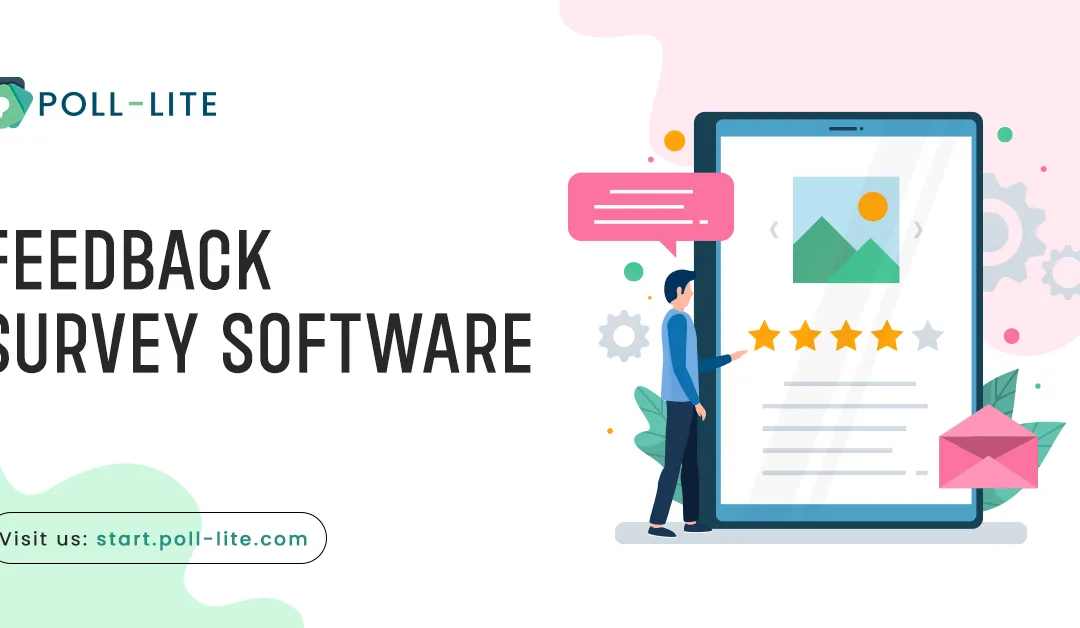In today’s data-driven world, feedback survey software has become an indispensable tool for businesses, organizations, and institutions looking to gather valuable insights from their audience. Whether you’re seeking feedback from customers, employees, students, or any other group, the quality of the data you collect largely depends on how you design, distribute, and analyze your surveys. To ensure that you get the most out of your feedback surveys, it’s essential to follow best practices. In this article, we’ll explore these best practices in detail to help you maximize the effectiveness of your feedback surveys.

1. Define Your Survey Goals
Before you even start creating your survey, it’s crucial to clearly define your goals.What are your intended outcomes from this feedback? Are you looking to improve customer satisfaction, identify areas for employee development, or gauge student engagement? Your goals will dictate the questions you ask and the data you need to collect. This initial step sets the foundation for the entire survey process.
2. Keep it Simple and Focused
One of the most common survey mistakes is creating overly complex, lengthy surveys that can overwhelm participants. To get the most accurate and thoughtful responses, keep your surveys concise and focused on your goals. Avoid jargon or convoluted language, and ask questions that are easy to understand. Remember that participants may be taking the survey on their mobile devices, so brevity is essential.
3. Choose the Right Question Types
The type of questions you use in your survey can significantly impact the quality of the data you collect. Common question types include multiple-choice, yes/no, rating scales, and open-ended questions. Different question types are suitable for different purposes, so choose them wisely. For example, use rating scales for measuring satisfaction, multiple-choice for demographic data, and open-ended questions for detailed feedback.
4. Personalize and Segment
To increase the relevance and effectiveness of your surveys, consider personalizing them when possible. Address participants by their names and segment your audience based on their characteristics. For instance, if you’re sending a customer feedback survey, you may want to segment your customers based on their purchase history, demographics, or location. This allows you to tailor questions and analyze results more effectively.
5. Use Logical Survey Flow
The order in which you present questions can influence responses. Start with easy, non-invasive questions to build participant confidence, and then gradually move to more sensitive or complex topics. A logical flow ensures that your survey feels natural and keeps participants engaged.
6. Mobile Optimization
Given the prevalence of smartphones and tablets, it’s essential to ensure that your survey is mobile-friendly. Mobile optimization is crucial to reach a broader audience and improve the overall user experience. Test your survey on different devices to make sure it works smoothly on all of them.
7. Test Your Survey
Before launching your survey to a broader audience, conduct a pilot test with a small group of individuals to identify any issues with clarity, wording, or technical functionality. This step allows you to make necessary adjustments and improve the overall quality of your survey.
8. Pretest the Survey
Pretesting your survey involves checking for potential biases or issues that may affect the results. Ensure that your questions are unbiased and that they don’t lead participants to a particular answer. It’s also essential to assess how long it takes to complete the survey, as excessively long surveys may lead to drop-offs.
9. Choose the Right Survey Distribution Method
Consider the most appropriate method for distributing your survey. Options include email, social media, your website, or survey distribution platforms. Each method has its advantages and disadvantages, so choose the one that aligns with your target audience and goals.
10. Reminders and Follow-Ups
Don’t be discouraged if you don’t receive responses immediately. Send out reminders to your feedback survey software and follow-ups to encourage participation. Timing can be critical, so consider when your audience is most likely to engage with your survey.
11. Analyze the Data
Once you’ve collected a sufficient number of responses, it’s time to analyze the data. Most feedback survey software provides tools for data analysis, making it easier to identify trends and insights. Look for patterns, outliers, and correlations within your data to draw meaningful conclusions.
12. Act on the Feedback
The most crucial step in the survey process through a feedback survey software is taking action based on the feedback you’ve collected. Share the results with relevant stakeholders, create action plans, and implement changes or improvements based on the insights gained from the survey. Communicate the actions you’re taking to the survey participants to show that their feedback is valued.
Celebrate Employee Engagement Excellence with Poll-Lite’s Powerful Survey Tools
If you are looking for the best employee engagement survey tools, you can visit the site of Poll-Lite quickly. With the power of AI, Poll-Lite’s Service Quality Engagement Tool is effective enough for the merchants to get the voice of their customers. The best practices for the survey are written above. But Poll-lite’s software can make the entire process easy and comprehensive on a practical note. Create and customize your unique survey effortlessly by adding your own questions or utilizing their AI widget for question suggestions. Tailor the look and feel with your brand colors, logo, and images, and include a compelling Call To Action linked to your incentive program. Place NFC/QR stickers at your premises for convenient access – and if you don’t have NFC, this tool can print and ship them to you. Customers can quickly engage with your poll in just 45 seconds by scanning the stickers. Access and analyze your survey data via their user-friendly dashboard, catering to businesses with one or numerous locations, offering multiple filtering options to easily view and interpret results.

Conclusion
Feedback survey software is a powerful tool for gathering insights, but its effectiveness relies on following best practices. By defining clear goals, crafting well-structured surveys, and analyzing data effectively, you can get the most out of your feedback surveys. Remember that the ultimate goal is not just collecting data but using it to drive positive change and enhance your organization’s performance.

